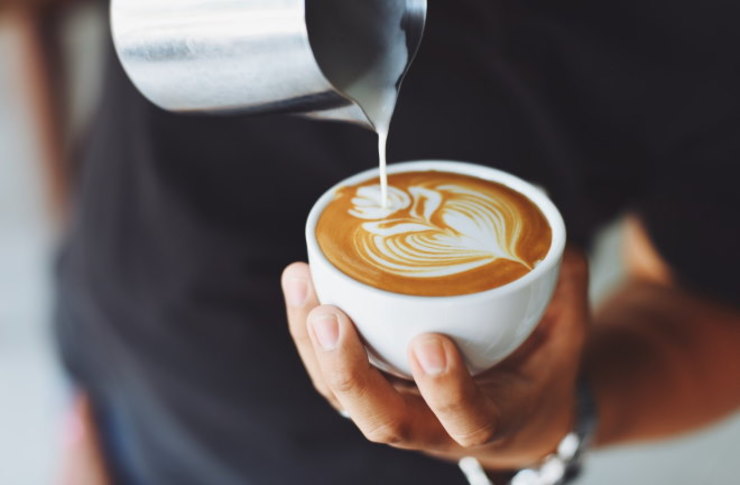Equipment and workflow for consistent milk-based design results
A practical overview of the equipment and step-by-step workflow that help baristas produce repeatable milk-based designs. Covers essential tools, milk preparation, steaming technique, pouring control, and simple patterns so learners can develop reliable results.

Producing consistent milk-based designs depends on a reliable setup and a repeatable workflow. This article outlines the equipment choices and step-by-step process a barista can adopt to control crema, milktexturing, and pouring so that rosetta, tulip, heart, and other patterns become repeatable rather than accidental. Focus is on fundamentals—espresso extraction quality, steam wand technique, milk temperature, and pitcher control—so texture and contrast are predictable.
What gear should a barista prioritize?
Essential equipment starts with a stable espresso machine, a good steam wand, and a range of milk pitchers. A machine that maintains pressure and temperature gives a consistent crema and reliable espresso shots, which form the visual base for milk design. Steam wands with variable power and a clean tip help create uniform microfoam. Pitchers in 12–20 oz sizes with a tapered spout support different cup sizes and pouring styles. A thermometer, tamper, scale, and knockout drawer complete a basic kit that supports repeatable milksteaming and milktexturing.
How does milksteaming influence microfoam?
Milksteaming technique directly affects microfoam quality. Start with cold milk and a chilled pitcher for control. Position the steam wand near the surface to stretch and introduce air, then submerge slightly to create swirling whirlpool motion that polishes the bubbles. Aim for glossy, paint-like microfoam without large bubbles; this texture suspends the milk fat and gives the contrast needed for clear rosetta and tulip shapes. Temperature control (typically 55–65°C depending on milk type) helps preserve sweetness and achieves stable foam for pouring.
What steps improve milktexturing consistency?
Repeatable milktexturing requires a sequence: purge the wand, position tip, introduce air for a few seconds, then lower the pitcher to create a vortex. Monitor for tiny pinhole bubbles and a satiny sheen. After steaming, tap and swirl the pitcher to integrate any remaining bubbles and to create a uniform surface for pouring. Practicing the timeline—how long to aerate vs. polish—helps the barista predict microfoam behavior. Different milks (dairy, oat, almond) will need minor adjustments in aeration time to reach the same pouring viscosity.
Which pouring techniques support control for designs?
Pouring control is about height, speed, and wrist motion. Begin with a higher pour to sink the milk beneath the crema, then lower the pitcher to the surface to allow foam to emerge and form patterns. A steady, small circular motion often helps create a rosetta foundation; short pulses form tulip layers; and a steady center pour produces a heart. Freepour practice develops coordination between the rate of milk flow and subtle pitcher movements, giving predictable line thickness and contrast against espresso crema.
How to form a rosetta, tulip, and heart reliably?
Start each pattern by assessing the crema and cup diameter. For a rosetta, pour low and move the pitcher side to side with a gentle forward motion to create leaf-like lobes, finishing with a swift pull-through to define the stem. For a tulip, stack successive blobs by pulsing and allowing each layer to settle before the next pour. For a heart, pour in the center, maintain a steady low stream until a dome forms, then pull through. Good microfoam and controlled pouring are the repeatable elements that determine clarity of these shapes.
When should etching be used instead of freepour?
Etching is a complementary approach when freepour cannot achieve fine detail, when working with very small cups, or when decorative lines and contrast need refining. Freepour emphasizes flow and texture, while etching uses tools to draw into the foam surface and can correct or enhance a design. Combining both—using freepour for the base and etching for highlights—lets baristas maintain consistency while expanding creative options. Practice both techniques so workflow can adapt to volume, cup size, and customer expectations.
Conclusion Consistency in milk-based designs comes from matching the right equipment with a disciplined workflow: reliable espresso and crema, precise milksteaming for stable microfoam, controlled pouring mechanics, and practiced pattern execution. Regular calibration of machine settings, mindful pitcher choice, and deliberate repetition of steaming and pouring sequences help baristas produce repeatable rosetta, tulip, heart, and freepour results across service shifts. Over time, small adjustments to technique and tools yield predictable aesthetic outcomes.






